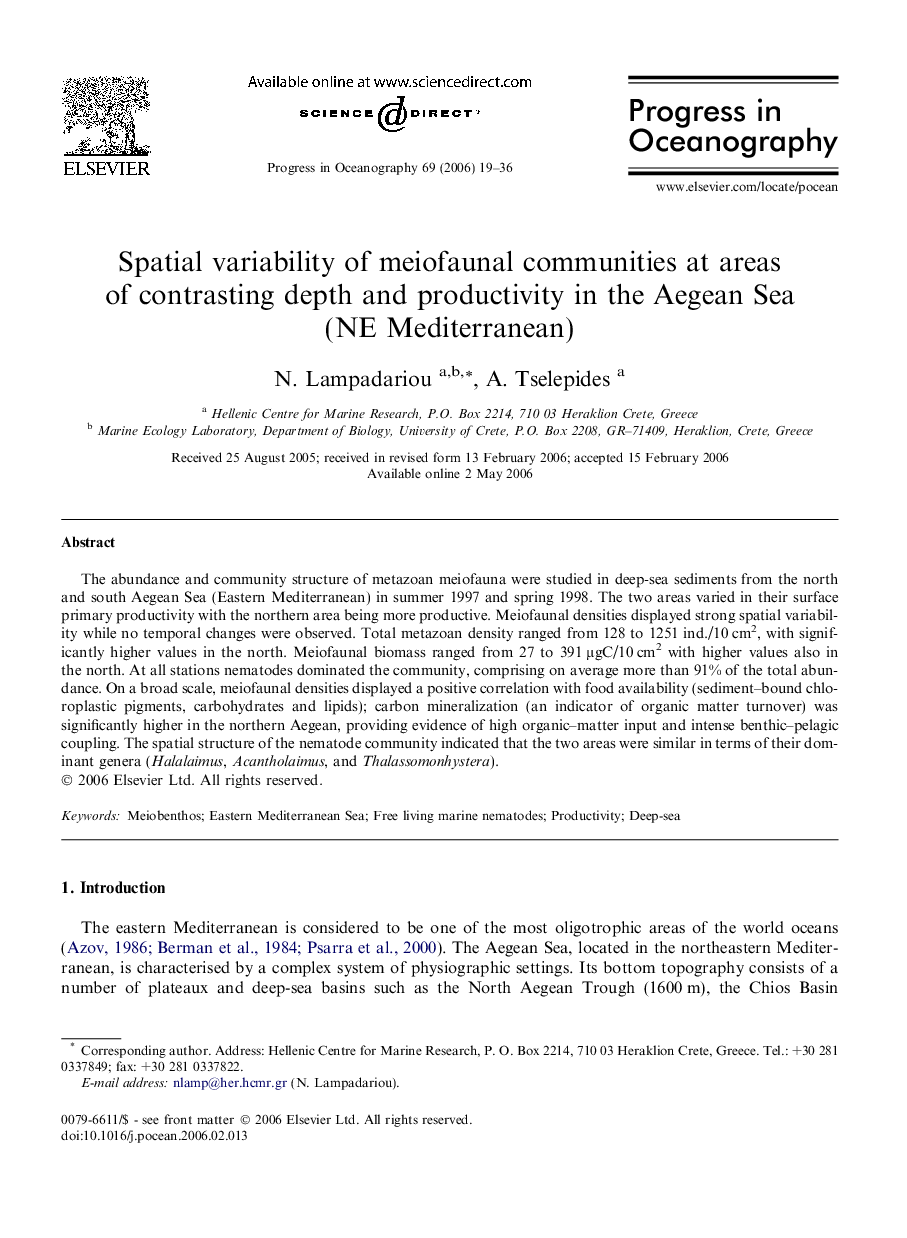| Article ID | Journal | Published Year | Pages | File Type |
|---|---|---|---|---|
| 4553970 | Progress in Oceanography | 2006 | 18 Pages |
The abundance and community structure of metazoan meiofauna were studied in deep-sea sediments from the north and south Aegean Sea (Eastern Mediterranean) in summer 1997 and spring 1998. The two areas varied in their surface primary productivity with the northern area being more productive. Meiofaunal densities displayed strong spatial variability while no temporal changes were observed. Total metazoan density ranged from 128 to 1251 ind./10 cm2, with significantly higher values in the north. Meiofaunal biomass ranged from 27 to 391 μgC/10 cm2 with higher values also in the north. At all stations nematodes dominated the community, comprising on average more than 91% of the total abundance. On a broad scale, meiofaunal densities displayed a positive correlation with food availability (sediment–bound chloroplastic pigments, carbohydrates and lipids); carbon mineralization (an indicator of organic matter turnover) was significantly higher in the northern Aegean, providing evidence of high organic–matter input and intense benthic–pelagic coupling. The spatial structure of the nematode community indicated that the two areas were similar in terms of their dominant genera (Halalaimus, Acantholaimus, and Thalassomonhystera).
